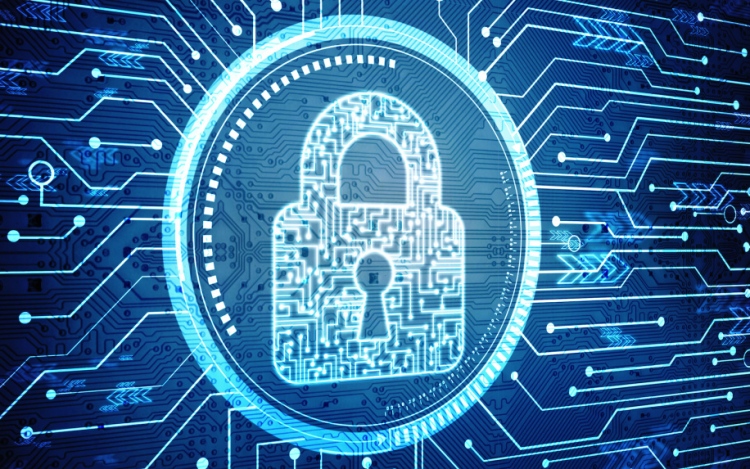You’re proud of your small business and have taken every single step necessary to optimize your business processes. You are not only following best practices, but you understand the value of data security. Protecting your business data is up there in importance with having the right insurance for your business. You understand how essential it is for your business success and your customer’s safety to set up safeguards against Internet threats from malware and hackers.
Besides data backups, using an antivirus, protecting your physical paperwork, shredding your documents, and improving password usage, what other ways can you protect all your business information?
Here are 3 more ways to tighten up your security:
-
Upgrade your USB flash drives.
Undoubtedly your business is already using flash drives because these plug-and-play devices are a convenient way to manage portable storage. It’s not only light enough to attach to a keychain, but it’s use of flash memory arguably makes it superior to a floppy disk, zip drive, or CD. Since most modern computers and devices have a USB port, it’s easy to get the operating system to recognize the device as a removable drive. What’s more, most USB drives are platform independent, meaning you don’t have to worry if you’re working with Mac, Windows, or Linux. With all these features, you might wonder if anything could be better. Actually, you can enjoy all these benefits using a secure USB flash drive, with a huge added benefit — it encrypts all your information, too. Moreover, the best ones use military-grade encryption standards.
-
Identify Vulnerable Employees.
Even if you protect your data with the best hardware and software, your business is still vulnerable to an attack through a channel that you may not have considered—your employees.
When hackers can’t break into a system because it’s armed to the teeth with security technology, then they try to con employees as a way to break into a computer system.
While any employee is vulnerable to a con, the most vulnerable employees are top executives (CEOs, CFOs, etc.), administrative assistants, salespeople, and human resources. This is because these are the most trusted employees in an organization and the ones least likely to suspect that someone would con them. In addition, they are the ones most likely to be able to give a hacker the information necessary to create an effective attack.
Since each employee is vulnerable in different ways, it’s important to create different security training for each one. For instance, top executives should be encouraged to restrict what they share with others inside and outside the organization, and with whom they connect on social media. Meanwhile, salespeople have to be cautioned about clicking on linked text or opening attachments from an email sent by someone posing as a prospect. It’s necessary for security admins to find out what the vulnerability of each level of business is and create ways to counteract communications to vulnerable employees from those acting with malicious intent.
-
Learn about Phishing Attacks.
Since all employees are vulnerable to phishing techniques used by scammers, it’s necessary to educate all employees about phishing attacks.
Here is a short list of 5 types of phishing attack schemes:
- Deceptive Phishing. A wide group of recipients receive an email asking them to click a link to verify their account information because there is a problem with it.
- Session Phishing. Once a user logs into a financial account, malware embedded in their computer hijacks their account and transfers funds out of it without the user being aware of it.
- Malware Phishing. A recipient receives an email asking them to download an important attachment.
- Keylogger Phishing. After a user is tricked into downloading free software, a utility program embeds in their browser or system files that track their keyboard inputs and sends the information across the Internet to a hacker.
- System Reconfiguration Phishing. When a user types in a URL, it is modified by malware to a similar looking URL and redirects the user to a lookalike site.
- Trojan Phishing. When a user is logging into an account, a web Trojan virus pops up, captures their login information, and sends it to a hacker.
Unfortunately, this is just a short list, and there are numerous other types of phishing. However, this should give you some idea of the level of sophistication used by hackers in their quest to steal sensitive information or money.
While this list is certainly alarming, most forms of phishing can be stopped through the use of up-to-date security software, which applies even to your mobile devices. It’s essential to do this as soon as possible. A government website on how to how to keep your security up to date succinctly explains how this works: “The manufacturer or wireless carrier can automatically transfer software updates directly to mobile devices. There are procedures you can follow to make sure updates are transmitted promptly to keep security protections up to date, such as using automated update options or vendor notification options. Install security software updates as soon as they become available instead of selecting ‘remind me later.’ ”
However, this software protection can be undermined by naïve user behavior by clicking on a link or downloading something that has malware files embedded in it.
How to Avoid Getting Overwhelmed
Reading through security measures can be overwhelming if you are unfamiliar with the technology you need to know. If this is the case and you don’t have your own IT staff yet, talk to someone well-versed in security technology. You can find these experts in big box stores that sell electronics; look up independent PC consultants, or even call a vendor’s technical support help line to figure out what software to buy or how to install a certain piece of hardware.




